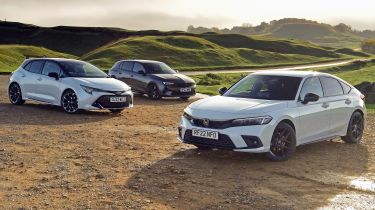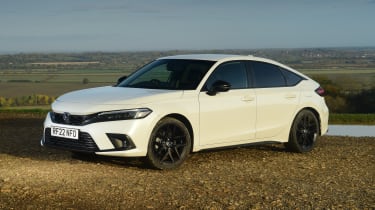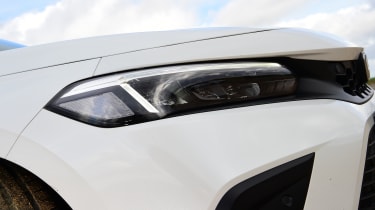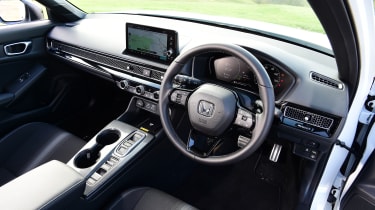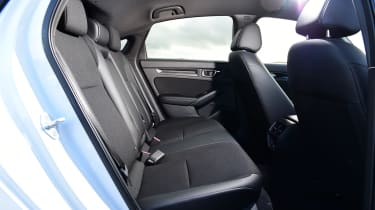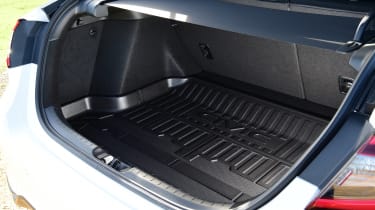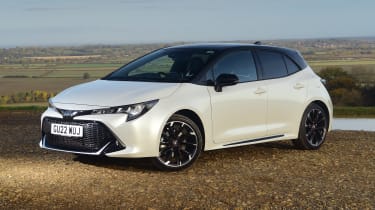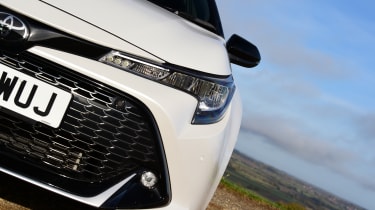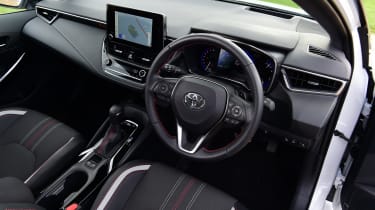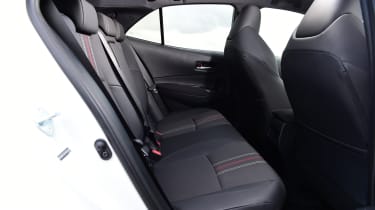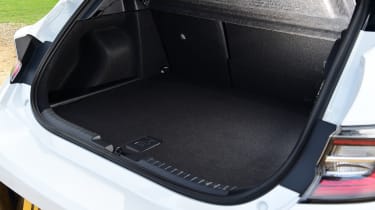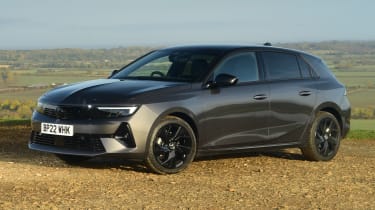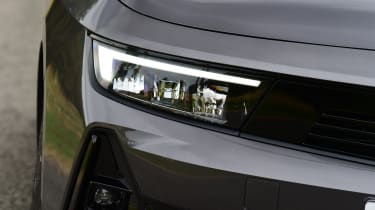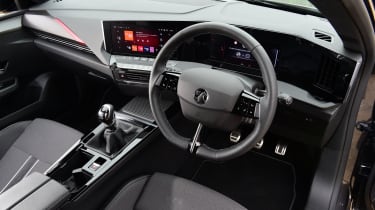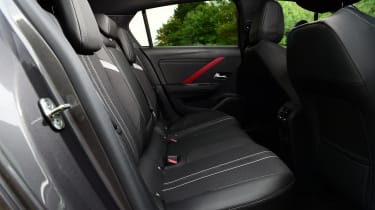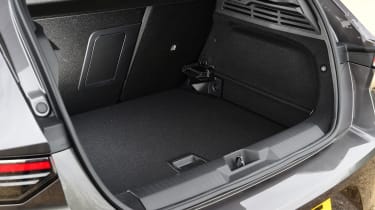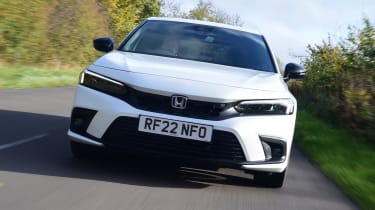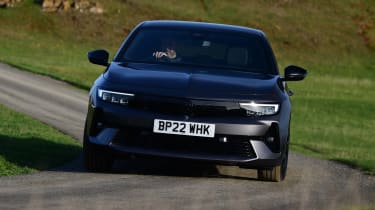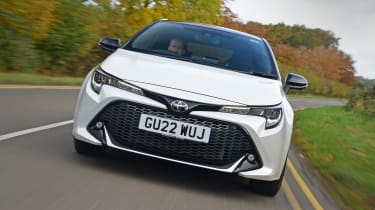Honda Civic vs Toyota Corolla vs Vauxhall Astra: 2022 group test review
With plenty of heritage behind it, can the new Honda Civic show these rivals how it’s done?
The Honda Civic turned 50 years old this year. It started life as a compact hatchback, in part a response to rising fuel prices and a desire from buyers to own a small and reliable car that didn’t cost the earth to run.
Now the Civic has reached its 11th generation. In the decades that have passed, Honda has had plenty of time to perfect the family hatchback formula, but this latest model responds to similar needs to the first – which is why power now comes exclusively from an all-new hybrid system.
One of the Civic’s Japanese rivals has led the way in petrol/electric technology in this class for some time. That’s why we’re pitching the Civic against the Toyota Corolla, a car which itself has recently been subjected to a mild update.
To keep the pair on their toes, we’ve enlisted the help of the Vauxhall Astra. The latest model has already proven its worth, seeing off both the Ford Focus and VW Golf in a previous group test. So does the Civic have what it takes to compete with the best in this segment?
Honda Civic
|
Model: |
Honda Civic e:HEV Sport |
|
Price: |
£30,595 |
|
Engine: |
2.0-litre 4cyl hybrid, 181bhp |
|
0-62mph: |
7.9 seconds |
|
Test economy: |
50.3mpg/11.1mpl |
|
CO2: |
113g/km |
|
Annual road tax: |
£155 |
Many recent Hondas have been let down by a relatively high retail price, but this Civic in mid-range Sport trim weighs in at a reasonable £30,595. So is there a catch?
Used - available now

2020 Ford
Focus
46,802 milesManualPetrol1.5L
Cash £14,296
2022 Ford
Focus
18,350 milesManualPetrol1.0L
Cash £17,076
2022 Kia
e-Niro
25,164 milesAutomaticElectric
Cash £15,799
2021 Peugeot
108
23,000 milesManualPetrol1.0L
Cash £8,449Design & engineering
The latest version of the Civic is a clean-sheet design compared with its predecessor, and Honda has plenty of stats to back up the changes – even when it comes to the aesthetics.
While you might not immediately notice a 35mm increase in wheelbase, a 20mm shorter rear overhang or a bonnet that sits 25mm lower compared with the outgoing model, the lack of fuss to the design is clear. This is a much cleaner, more cohesive look than the old Civic.
There are stats elsewhere to flaunt the Civic’s technical improvements, too. The new body structure is 22 per cent more rigid than the outgoing car’s, while the aluminium bonnet and resin tailgate are respectively 43 and 20 per cent lighter than the items on the last Civic. Revised suspension features retuned dampers, a wider track and low-friction ball joints, which Honda says bring the benefit of improved stability and dynamic response, while great care has been taken to insulate both the din from the engine at the front and the road noise from the rear wheelarches.
Honda’s designers have also worked hard to tidy up the interior design significantly. The overall effect is one of the slickest-looking cabins in the segment, yet one that hasn’t compromised on ergonomics – just take a look at the big climate control switches, for example. Build quality feels great, too.
The powertrain is a fascinating one. A 2.0-litre Atkinson-cycle engine (Honda claims an industry-best thermal efficiency of 41 per cent) is paired with two electric motors. At low speeds, the Civic is EV only; when hard acceleration is needed or the 1.05kWh battery runs low, the engine can run as a generator for the battery, without driving the wheels. At motorway speeds, the system switches to engine only, reducing any possible losses through the hybrid system. The result is 181bhp and 315Nm, plus a claimed economy figure of 56.5mpg.
Driving
It may sound complex on paper, but in practice that hybrid system works incredibly smoothly. It behaves much like an EV in most situations – save for the occasional engine noise kicking in – which in combination with the precision of the other controls, makes it very easy to control when parking or when shuffling along in heavy traffic. The only time the engine really makes itself heard is if you’re trying to match the rapid 7.9-second 0-62mph time. It’s slightly noisier than the Toyota in similar situations, but it doesn’t sound as harsh.
The Civic’s ride quality is certainly the firmest here, though. Around town, this is relayed into the cabin by a level of fidget that isn’t quite present in either of the other two cars. The sounds of knocks and bumps are well isolated from the occupants, though, and this is combined with a level of damping which, although firm, feels sophisticated. The Civic’s ride settles down beautifully at high speeds. The trade-off for that is a degree of body control that little other than a Ford Focus or Mazda 3 can compete with.
The chassis is agile and adjustable, yet serves up plenty of grip, too. The steering feels sharp, precise and predictably weighted. The basic set-up here bodes very well for the Type R model – something hot hatch fans will be delighted to hear.
Practicality
The Civic’s talents lie beyond the way it drives, though, because it’s also one of the most spacious in its class. Only the Skoda Octavia is better for rear-passenger accommodation; the Honda is far more roomy than either of its rivals here. Headroom is also competitive, while a removable fabric panel makes it easy to reach the Isofix child seat mounts.
At 415 litres, the boot is above average for the segment. The opening is quite large, but the boot floor ramps up towards the front of the compartment with the seats raised, so it will be a little fiddly to stack larger items such as suitcases. The seatbacks fold flatter than in either of its rivals here, though, while the neat retractable parcel shelf is easy to stow when you need to carry bulky items.
Storage is decent up front, too. There’s a large central bin, a pair of deep cup-holders and a large smartphone shelf. The door pockets are larger than the Toyota’s, but not as wide as the Vauxhall’s.
Ownership
Honda owners are provided with a three-year/90,000-mile warranty as standard with the new Civic. That’s the same amount of time as the Astra’s, but the Vauxhall’s package runs to only 60,000 miles.
Neither are a match for the Toyota, though, which can run for as long as 10 years and 100,000 miles. The only catch to this deal is that you must take the car to be serviced at an official Toyota garage each year, at which point the warranty cover is extended by a further 12 months and 10,000 miles.
Running costs
One of the chief aims of a hybrid powertrain is to save fuel – and in that respect the Civic has really nailed its brief. We averaged 50.3mpg on test, which is impressive considering the performance on offer.
The Corolla also does well, only just behind on 49.2mpg. The Astra gets close to those numbers on a long motorway run, but around town it was thirstier, averaging out at 43.5mpg.
That means the Civic costs £2,999 to run for 20,000 miles; the Corolla is £67 more (almost the cost of one tank of fuel in the Honda) and the Astra is the most expensive, at just under £3,500.
Tester’s notes: “With so many cars now using LED tech, the Civic’s halogen reversing light looks a bit cheap. At least it shouldn’t cost much to replace if it blows.”
Toyota Corolla
|
Model: |
Toyota Corolla 2.0 Hybrid GR Sport |
|
Price: |
£34,135 |
|
Engine: |
2.0-litre 4cyl hybrid, 181bhp |
|
0-62mph: |
7.9 seconds |
|
Test economy: |
49.2mpg/10.8mpl |
|
CO2: |
119g/km |
|
Annual road tax: |
£155 |
In this sporty-looking GR Sport trim, the Corolla is the most expensive car here, at £34,135. Factor in the fetching Platinum White Pearl paint with a black roof (£1,240) and the total price climbs to £35,375.
Design & engineering
Like the Civic, the Corolla bears a nameplate that dates a long way back into Toyota’s history, with the first version appearing in 1966. It’s certainly a car that is forward-looking in terms of its design, though; despite this version’s initial release dating back to 2018, it still looks sharp and contemporary beside its two very new challengers. The sporty GR Sport trim definitely plays a part here, but it’s a modern look, regardless.
Inside, it doesn’t quite look or feel as fresh as its competitors, but the clean design is functional and uncluttered. The GR Sport’s black trim is jazzed up with some subtle red stitching, but overall it’s a fairly subdued place to sit. The front seats are fantastic, offering plenty of side support yet remaining comfortable on longer journeys, too.
The Corolla rides on Toyota’s TNGA platform, which was designed from the outset to work with hybrid powertrains. Here, there’s a choice of two: the range kicks off with a 1.8-litre unit that makes 138bhp, or there’s the more potent 2.0-litre option we have here. At 181bhp, it’s a match for the Civic, but its 250Nm torque figure is 65Nm lower.
The Toyota’s hybrid system works differently from the Honda’s; the engine can drive the wheels directly, either with or without the help of the electric motor, with charge being placed back into the 1.8kWh battery – slightly larger than the Honda’s unit – through regenerative braking or engine idling. Charging is controlled automatically.
The gearbox is what Toyota refers to as an E-CVT. It can constantly adjust the revs of the engine in order to maximise either efficiency or performance.
Driving
Toyota has spent many years trying to perfect its hybrid tech, and that’s clear from the quality of the Corolla’s powertrain. With sufficient battery charge, the car moves off seamlessly in electric mode, before the petrol engine wakes up to add a little extra shove once up to speed. When cruising at anything below most motorway speeds, the engine will frequently cut out again to boost the range as much as possible.
This being the larger of the two engines on offer, the hybrid system doesn’t come at the expense of performance, either. The sprint from 0-62mph takes 7.9 seconds – a match for the Civic – and with the engine backed up by the responsive electric motor, it feels lively too – especially if you switch to Sport mode, which sharpens the throttle response.
That strong performance means that the one downside to Toyota’s E-CVT – a droney engine noise – doesn’t happen as often here, because the engine doesn’t need to be stretched much. Still, when it does happen, it’s the least pleasant noise of this trio. You can access artificially stepped gear ratios by flicking the two steering wheel-mounted paddles. But they’re pointless; they don’t add any tangible excitement to the experience or benefit the performance, and they still feel unnatural to use.
We’d love to see the Corolla equipped with a more exciting powertrain, because its chassis is one of the best in this segment. It runs the Honda very close for sharpness, yet manages to ride with more compliance, especially at lower speeds, so it gives a great everyday compromise. The steering doesn’t quite have the ultimate precision of the Civic’s, but is still better than most alternatives.
Practicality
If there’s one Achilles’ heel for the Corolla, it’s the boot space. With both a 12-volt battery and a space-saver spare wheel located at the back, the overall capacity is just 313 litres – that’s smaller than you’ll find in most superminis. It’s worth noting the 1.8-litre hybrid is less affected by this problem, so it gets a more generous (but still not brilliant) 361 litres.
The Corolla also has the least cubby space inside. The central bin between the front seats is narrow and the base is covered by a cheap piece of fabric that isn’t even stuck down. The door pockets struggle to hold a reusable bottle, too, but our main gripe is that there’s nowhere useful to hold a smartphone if it’s plugged into the USB port – itself positioned in an odd place on the underside of the dash.
Rear-seat passengers have the least kneeroom (there’s slightly less than the Astra and much less than in the Civic), but headroom is a little more generous than it is in the Vauxhall.
Ownership
The Corolla was assessed by safety experts Euro NCAP back in 2019 and it achieved the top five-star rating, with an excellent 95 per cent score in the adult occupant protection category. While the Astra achieved only four stars in its assessment, it’s worth noting that NCAP’s standards get tougher every two years, so the scoring the Astra was subjected to in 2022 was harder to pass. The Civic hasn’t been tested yet.
Running costs
Regular maintenance helps to maintain the Toyota’s huge warranty, but the small downside is that the price of that might be a little high compared to some rivals. An intermediate service for the Corolla costs £230, while a major service will set you back £350, so it’s worth budgeting that into your annual costs.
The Astra costs £470 to service for the first two years of its life, but it’s the Civic which is the best value here. Honda offers a five-year service plan that costs £699. This means that maintenance over that period comes to just under £140 per year.
Tester’s notes: “The boot might be small, but the small elastic strap that holds the false floor in place makes it much easier to reach the spare wheel.”
Vauxhall Astra
|
Model: |
Vauxhall Astra 1.2 Turbo GS Line |
|
Price: |
£27,210 |
|
Engine: |
1.2-litre 3cyl turbo, 128bhp |
|
0-62mph: |
9.7 seconds |
|
Test economy: |
43.5mpg/9.6mpl |
|
CO2: |
124g/km |
|
Annual road tax: |
£165 |
We’re testing the Astra in middle-spec GS Line trim, which with an automatic gearbox comes to a very competitive £27,210 (the six-speed manual ’box shown here is £2,100 cheaper). That makes it comfortably the cheapest car in this test, but does it feel that way from behind the wheel?
Design & engineering
Another long-standing nameplate, the Astra has been part of the furniture on UK roads since 1980. Big changes have happened to the C-segment hatchback in that time, the most notable in recent years taking place in this eighth-gen model – the first Astra to be developed with technology from the Stellantis group.
Beneath the sharply styled body sits the same EMP2 architecture used by the likes of the Peugeot 308, Citroen C5 Aircross and the brilliant new DS 4. The powertrains are shared with those French cars, too; under the bonnet, there’s a choice of petrol and diesel engines. While these both lack the hybrid assistance you get in the Toyota and the Honda, the Astra sets itself apart with the option of a plug-in hybrid powertrain. The PHEV model combines a 1.6-litre turbo engine with a 12.4kWh battery.
We’re driving the 1.2-litre three-cylinder petrol here, though. It’s a little down on power compared with the mix of 2.0-litre petrol and electric motors that the Japanese contenders use, but 128bhp and 170Nm is still adequate shove for most families. The Vauxhall’s engine sends its drive to the front wheels through an eight-speed automatic gearbox.
Much like with the new Civic, the Astra’s cabin is a vast improvement over the model that came before it. Most obvious are the strides forward in both tech and quality; this really feels like a product that’s creeping closer to premium alternatives than ever before. The cabin materials are well finished, but we reckon that the acres of piano black-style plastic aren’t likely to stand up to family life very well.
Ergonomically, it’s not quite a match for the competition here either. The dashboard line is very high, which means that even if you choose to jack up your seat higher than you might normally choose to, the view ahead still isn’t as clear. You’ll probably need to raise the seat for another reason too – several testers found that the steering wheel doesn’t adjust low enough.
Driving
Our nit-picking with the steering continues out on the road. Beside two rivals with slick, precise responses, the Astra feels just a bit lazy. It’s even worse if you put it in Sport mode, when the rack becomes heavier without adding any useful feedback. Turn into a corner, and it’s clear that the Astra has been set up to feel secure rather than fun; in this company, it feels a little unresponsive. It is, however, fine for all but keener drivers and the Vauxhall feels very stable on the motorway.
Another area where the Astra is a little slow-witted is its transmission. The eight-speed auto gearbox just can’t compete with the keen responses of either of the two hybrids here. It doesn’t feel as smooth at any point, either, but that’s particularly true at low speeds, where the interaction between brakes, gearbox and engine stop-start system is clunky.
In terms of outright performance, the Astra lags behind the other two on paper and out on the road. However, this is easier to excuse because of the Astra’s lower price point. What’s more important is that the engine is very quiet; the three-cylinder motor emits a subtle vibration, but even under hard acceleration it’s never as vocal as the other two – partly explained by its more conventional auto ’box.
In terms of ride quality, the Astra falls between the most comfortable Toyota and the busier Honda, which is a respectable result. Road and wind noise is well contained on the whole.
Practicality
At 422 litres, the Astra has the largest boot of this trio. While it only just pips the Civic for overall volume, the space is flatter and better shaped, so it’s easier to load plenty of items on board. Fold the seats and the overall space expands to 1,339 litres, which helps the Vauxhall pull even further clear of the Honda.
However, the Astra can’t compete with the Civic’s rear-seat accommodation. Although the centre seat is quite comfortable, the Isofix points are the least accessible of these three; they’re behind zipped covers and you have to fight through the internal seat foam to get at them properly.
The front seats are treated to the largest and best thought-out cubby spaces, though. There’s a neat sunglasses holder beneath the central air vent, and the central storage bin and the glovebox are huge, while the main bin, which holds a wireless charging pad, has space for a second smartphone in the same area – impressive.
Ownership
Vauxhall put in a poor showing in our most recent Driver Power satisfaction survey, with the brand finishing 19th out of 29 brands overall. Toyota is usually a strong finisher, so its 10th-place finish was a slight dip in form, while Honda took a strong fifth.
Running costs
While hybrid powertrains emit fewer emissions than conventional combustion engines – and therefore sit in lower company-car tax brackets, those savings are offset by the Astra’s lower P11D value.
So despite its 29 per cent Benefit in Kind banding, the Astra is the cheapest; standard-rate income tax payers will face deductions of £1,564 per year, compared with £1,639 for the Civic, even though it is rated two percentage bands lower. The Corolla sits in the 28 per cent band, but its P11D value – the highest here – means that its deductions come to £1,898.
Tester’s notes: “Some of us found that there are one two many textures going on in the Astra’s cabin. It all looks a bit fussy beside the Honda.”
Results
First place: Honda Civic
Previous versions of the Honda Civic have generally been practical and decent to drive, but the latest version ranks even closer to the top of the class in those areas than ever before. Of more significance, however, is this new model’s value for money, especially its fuel economy, which means we now rate the Civic as one of the very best cars to buy in this segment.
Second place: Vauxhall Astra
While it was able to overcome the best that Ford and VW have to offer, it shows the quality of the Honda that the Vauxhall must settle for second here. The latest Astra isn’t just stylish, but practical, comfortable and solidly built too – however, the Civic offers more performance, better fuel economy and even more space for almost identical money. Still, it’s a very respectable showing for the Vauxhall.
Third place: Toyota Corolla
The Corolla takes third place, but it still puts forward a very strong showing. It’s great to drive, is almost as frugal as the Civic and the new infotainment set-up is miles better than the previous offering. However, in this 2.0-litre form the Toyota is quite expensive and practicality is below average for the class. If those things aren’t deal breakers for you, the Corolla is still well worth a look.
Other options in this category
Skoda Octavia SE L 1.5 TSI e-TEC
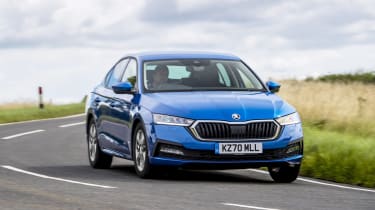
- Price: £29,780
- Engine: 1.5-litre petrol, 148bhp
One of the few cars that has the Civic beaten for practicality remains a brilliant all-rounder. Spacious, comfortable and with performance almost on a par with the Honda, it’s also competitively priced in this segment.
Volkswagen Golf 1.5 eTSI
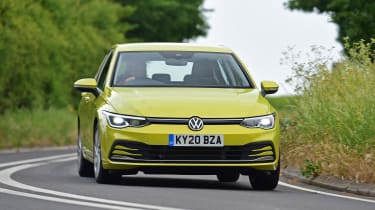
- Price: £31,245
- Engine: 1.5-litre petrol, 148bhp
The Golf remains as solid, as spacious and as refined to drive as ever, but the latest version is let down big time by clunky touchscreen ergonomics. Expect an update shortly aimed at addressing those flaws.
Figures
|
Honda Civic e:HEV Sport |
Toyota Corolla GR Sport 2.0 |
Vauxhall Astra GS Line 1.2 Turbo | |
|
On the road price/total as tested |
£30,595/£31,220 |
£34,135/£35,375 |
£27,210/£27,810 |
|
Residual value (after 3yrs/36,000) |
£16,426/53.7% |
£19,525/57.2% |
£12,718/46.7% |
|
Depreciation |
£14,169 |
£14,610 |
£14,492 |
|
Annual tax liability std/higher rate |
£1,639/£3,279 |
£1,898/£3,797 |
£1,564/£3,128 |
|
Annual fuel cost (12k/20k miles) |
£1,799/£2,999 |
£1,839/£3,066 |
£2,081/£3,468 |
|
Ins. group/quote/VED |
28/£726/£155 |
20/£714/£155 |
20/£640/£165 |
|
Cost of 1st/2nd/3rd service |
£699 (5 years) |
£570 (2 years) |
£470 (2 years) |
|
Length/wheelbase |
4,551/2,734mm |
4,370/2,640mm |
4,374/2,675mm |
|
Height/width |
1,408/1,802mm |
1,460/1,790mm |
1,432/1,860mm |
|
Engine |
4cyl in-line/1,993cc |
4cyl in-line/1,987cc |
3cyl in-line/1,199cc |
|
Peak power/revs |
181bhp/N/A |
181/N/A bhp/rpm |
128/5,500 bhp/rpm |
|
Peak torque/revs |
315Nm/N/A |
250/1,500 Nm/rpm |
170/1,750 Nm/rpm |
|
Transmission |
eCVT auto/fwd |
E-CVT auto/fwd |
6-spd man/fwd |
|
Fuel tank capacity/spare wheel |
40 litres/repair kit |
43 litres/space saver |
52 litres/dealer-fit |
|
Boot capacity (seats up/down) |
415/1,220 litres |
313/N/A litres |
422/1,339 litres |
|
Kerbweight/payload/towing weight |
1,459/471/750kg |
1,510/400/750kg |
1,371/509/1,200kg |
|
Turning circle |
11.6 metres |
10.8 metres |
10.5 metres |
|
Basic warranty (miles)/recovery |
3 yrs (90k)/3 yrs |
10 yrs (100k)/1 yr |
3 yrs (60k)/1 yr |
|
Driver Power manufacturer/dealer pos. |
5th/1st |
10th/6th |
19th/N/A |
|
NCAP: Adult/child/ped./assist/stars |
N/A |
95/84/86/77/5 (’19) |
80/82/67/66/4 (’22) |
|
0-62mph/top speed |
7.9 secs/111mph |
7.9 secs/112mph |
9.7* secs/130mph |
|
Test mpg/range (miles) |
50.3/443 |
49.2/465 |
43.5/498 |
|
WLTP combined |
56.5 mpg |
55.3 mpg |
48.7mpg |
|
WLTP combined |
12.4 mpl |
12.2 mpl |
10.7mpl |
|
Actual/claimed CO2/tax bracket |
130/113g/km/27% |
133/119g/km/28% |
150/124g/km/29% |
|
Airbags/Isofix/park. sensors/camera |
Eleven/yes/f&r/yes |
Seven/yes/f&r/yes |
Eight/yes/f&r/360 |
|
Auto box/lane keep/blindspot/AEB |
Yes/yes/yes/yes |
Yes/yes/no/yes |
£1,500/yes/no/yes |
|
Climate ctrl/adaptive cruise |
Yes/yes |
Yes/yes |
Yes/yes |
|
Leather/heated seats |
No/yes |
No/no |
No/yes |
|
Metallic paint/LED lights |
£625/yes |
£630/yes |
£600/yes |
|
Keyless entry & go/powered tailgate |
Yes/no |
Yes/no |
Yes/no |
|
Sat-nav/digital dash |
Yes/no |
Yes/yes |
Yes/yes |
|
DAB/connected services |
Yes/yes |
Yes/yes |
Yes/yes |
|
Wireless charge/CarPlay/Android Auto |
Yes/yes/yes |
Yes/yes/yes |
No/yes/yes |
